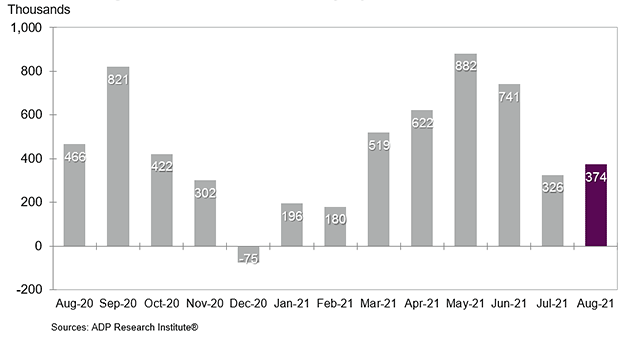Forex markets are settling into a comfort zone that excludes the Fed taper. DXY has confirmed a false breakout and EUR is up:
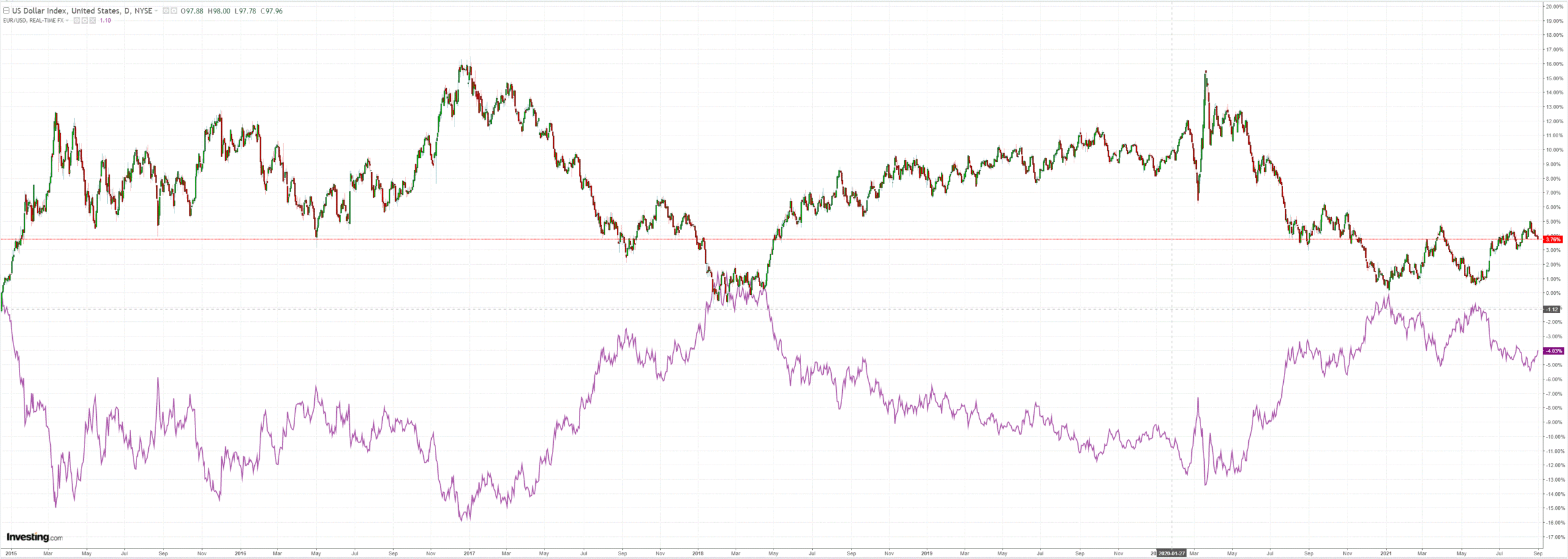
The Australian dollar has given back all taper losses:
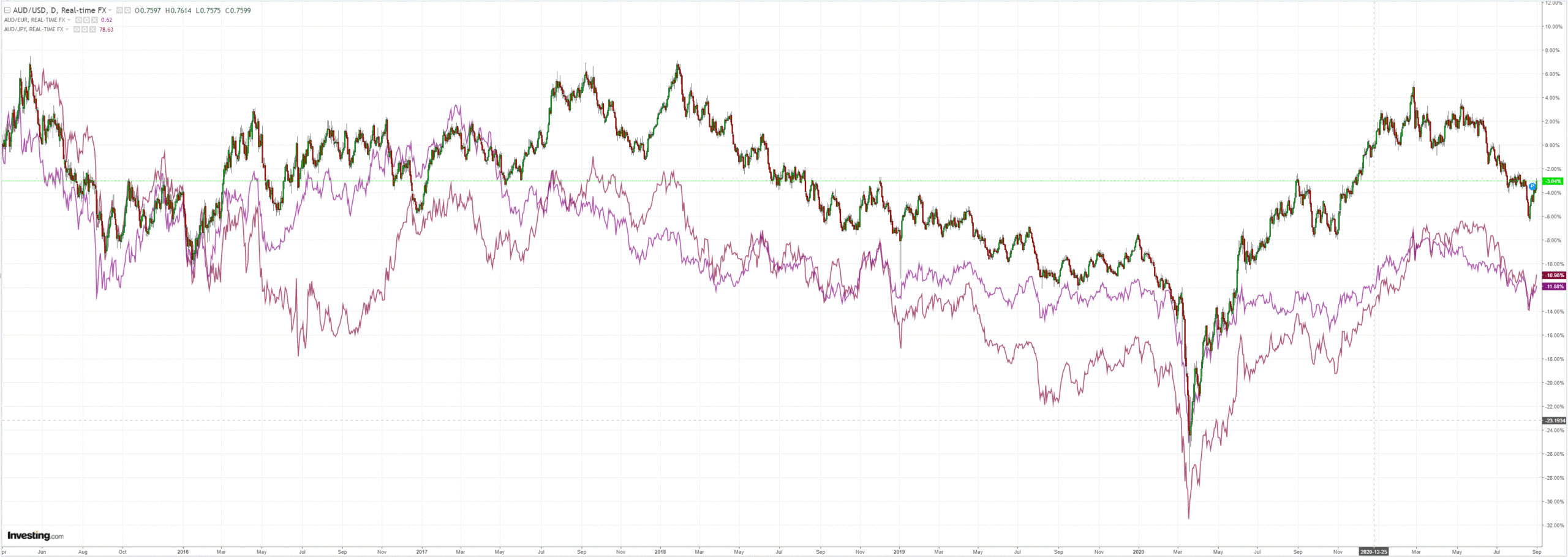
However, the reason why taper is off, slowing growth, also weighed on commodities:
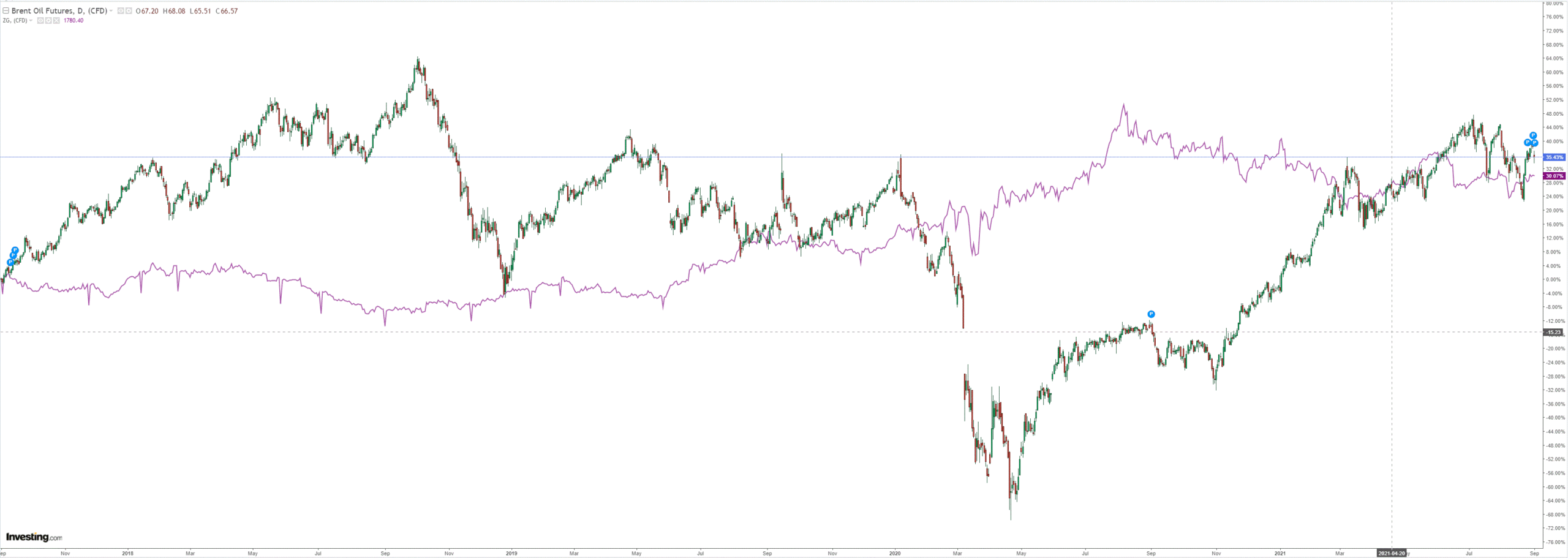
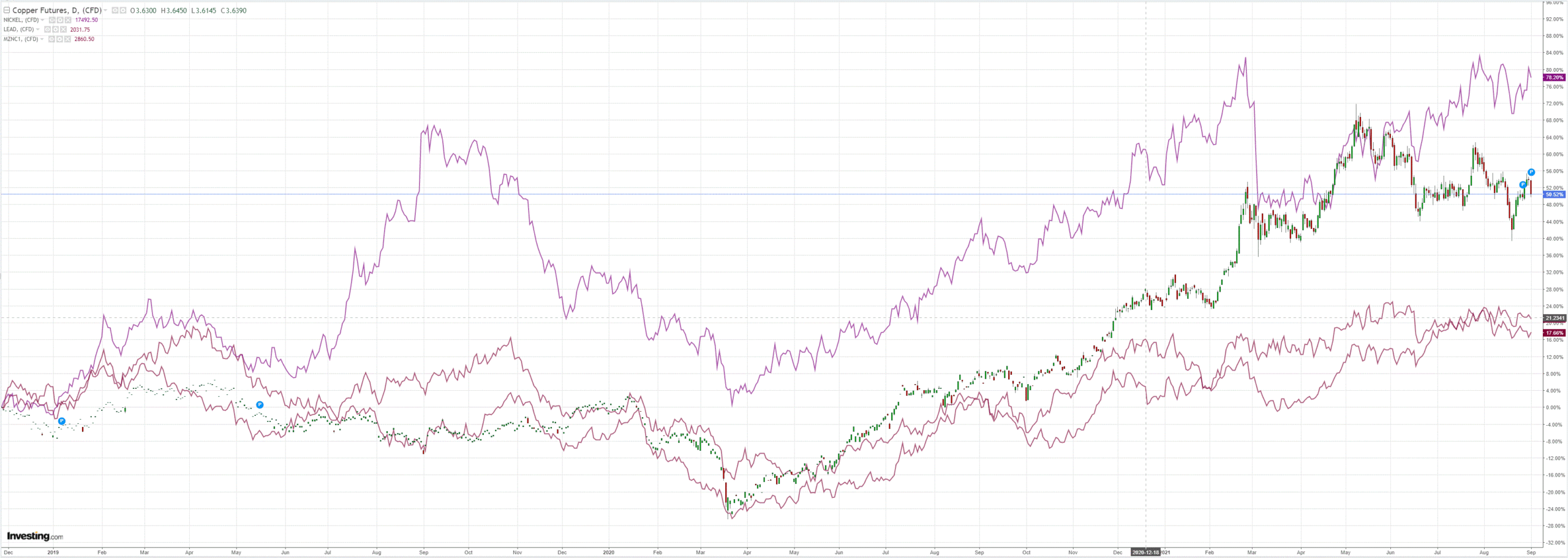
And miners:

EM stocks did better:
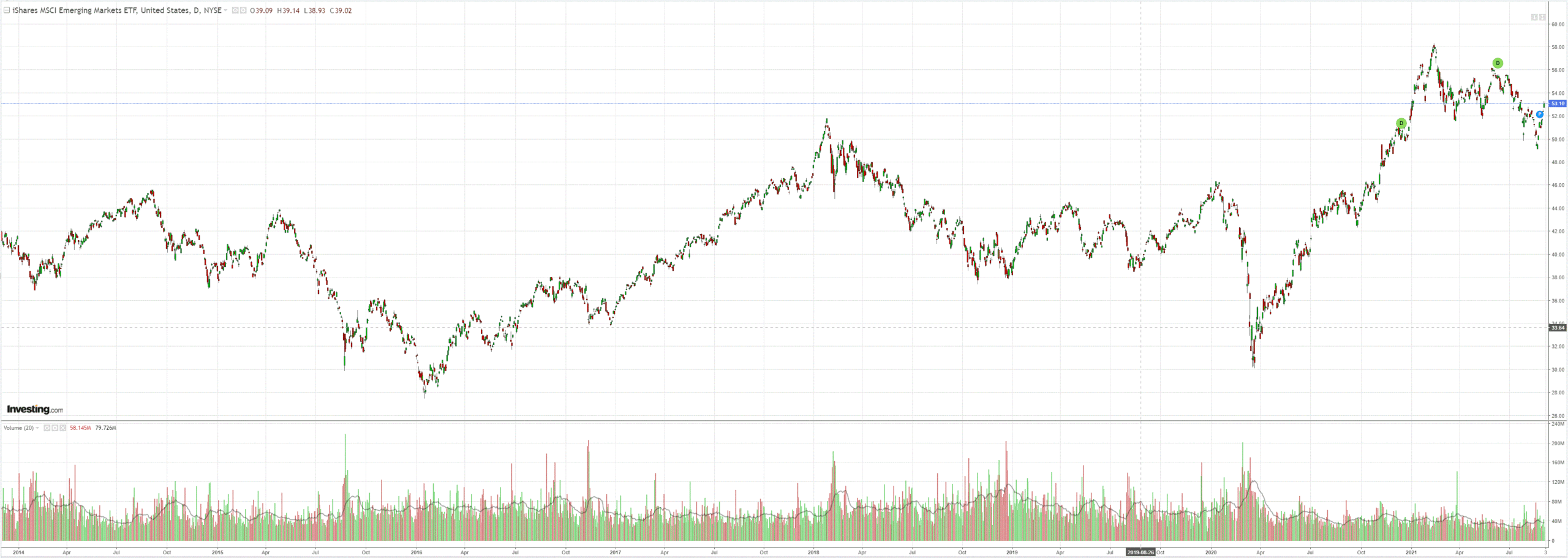
But not junk:
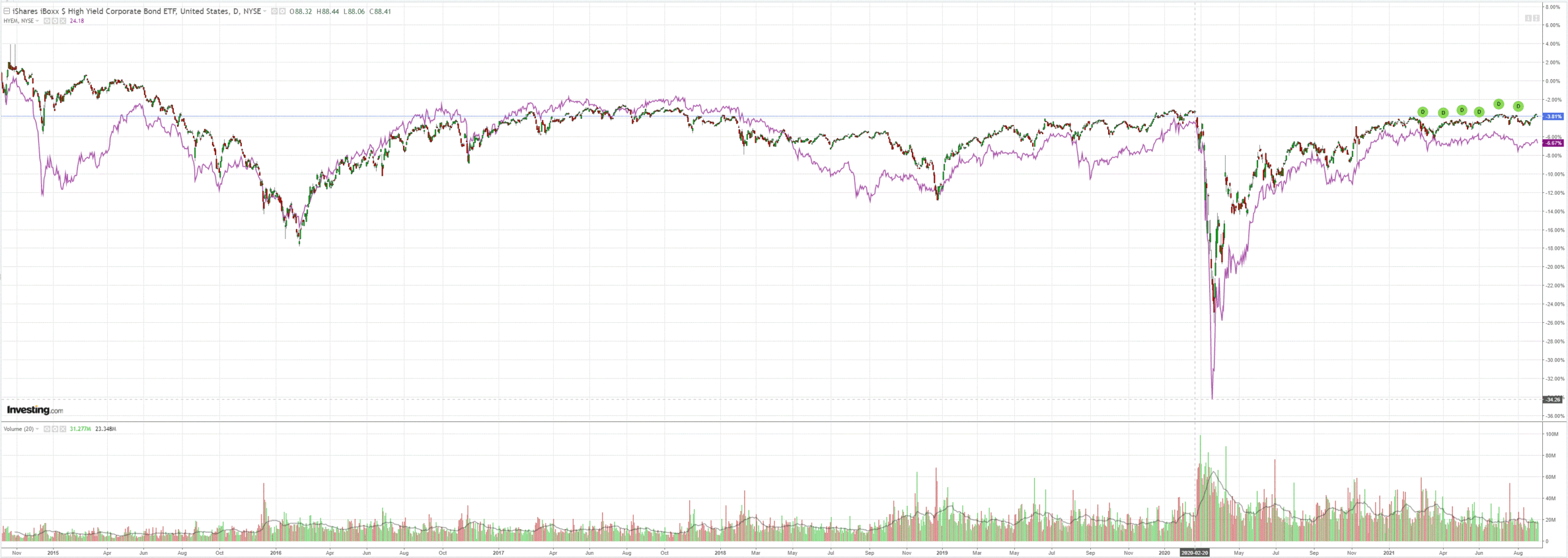
The curve flattened:
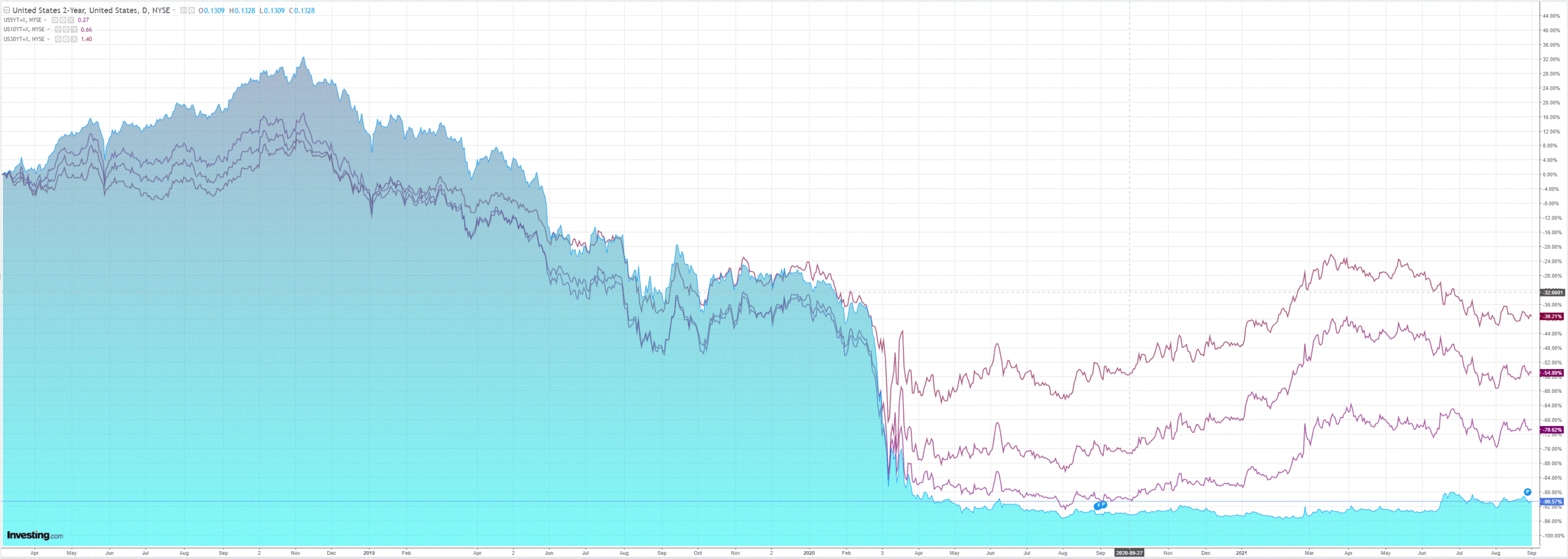
And the Growth blowoff continues:
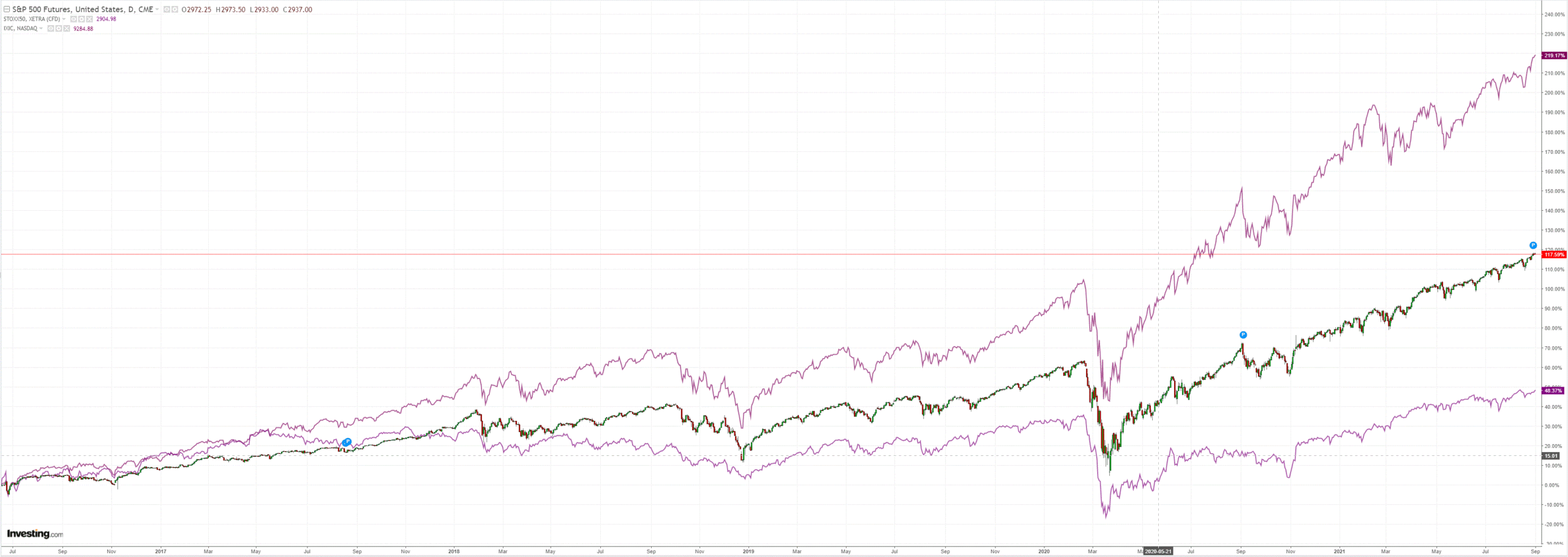
US data on the night was decent but no cigar. The ISM was superficially strong but employment fell:
The August Manufacturing PMI® registered 59.9 percent, an increase of 0.4 percentage point from the July reading of 59.5 percent. This figure indicates expansion in the overall economy for the 15th month in a row after contraction in April 2020. The New Orders Index registered 66.7 percent, increasing 1.8 percentage points from the July reading of 64.9 percent. The Production Index registered 60 percent, an increase of 1.6 percentage points compared to the July reading of 58.4 percent. The Prices Index registered 79.4 percent, down 6.3 percentage points compared to the July figure of 85.7 percent; this is its first reading below 80 percent since December 2020 (77.6 percent). The Backlog of Orders Index registered 68.2 percent, 3.2 percentage points higher than the July reading of 65 percent. The Employment Index indicated contraction at 49 percent, 3.9 percentage points lower compared to the July reading of 52.9 percent.
And the ADP was OK but hardly tearaway:
Private sector employment increased by 374,000 jobs from July to August according to the August ADP® National Employment ReportTM. Broadly distributed to the public each month, free of charge, the ADP National Employment Report is produced by the ADP Research Institute® in collaboration with Moody’s Analytics. The report, which is derived from ADP’s actual payroll data, measures the change in total nonfarm private employment each month on a seasonally-adjusted basis.
“Our data, which represents all workers on a company’s payroll, has highlighted a downshift in the labor market recovery. We have seen a decline in new hires, following significant job growth from the first half of the year,” said Nela Richardson, chief economist, ADP. “Despite the slowdown, job gains are approaching 4 million this year, yet still 7 million jobs short of pre-COVID-19 levels. Service providers continue to lead growth, although the Delta variant creates uncertainty for this sector. Job gains across company sizes grew in lockstep, with small businesses trailing a bit more than usual.”
Remember that the month-to-month correlation with the BIS is weak so this does not preclude a strong official report.
The slowdown is partly Delta as it retards the services rebound. But just important is the easing global inventory cycle in goods:
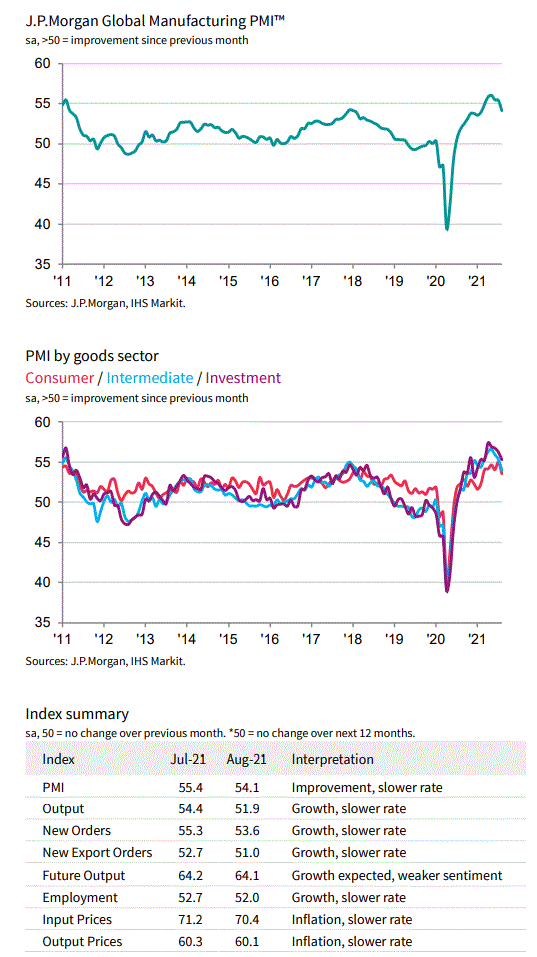
As China’s old economy enters a hard landing ahead, I expect this to get worse and commodities to crash. So, the base case is that there will be no taper this year unless China panics into broad stimulus.
For the Australian dollar, the battle is now between a deflating China dragging it down and a paralysed Fed driving it up.
That has taken away some immediate downside but the base case is still bearish as hard commodities free fall ahead.

